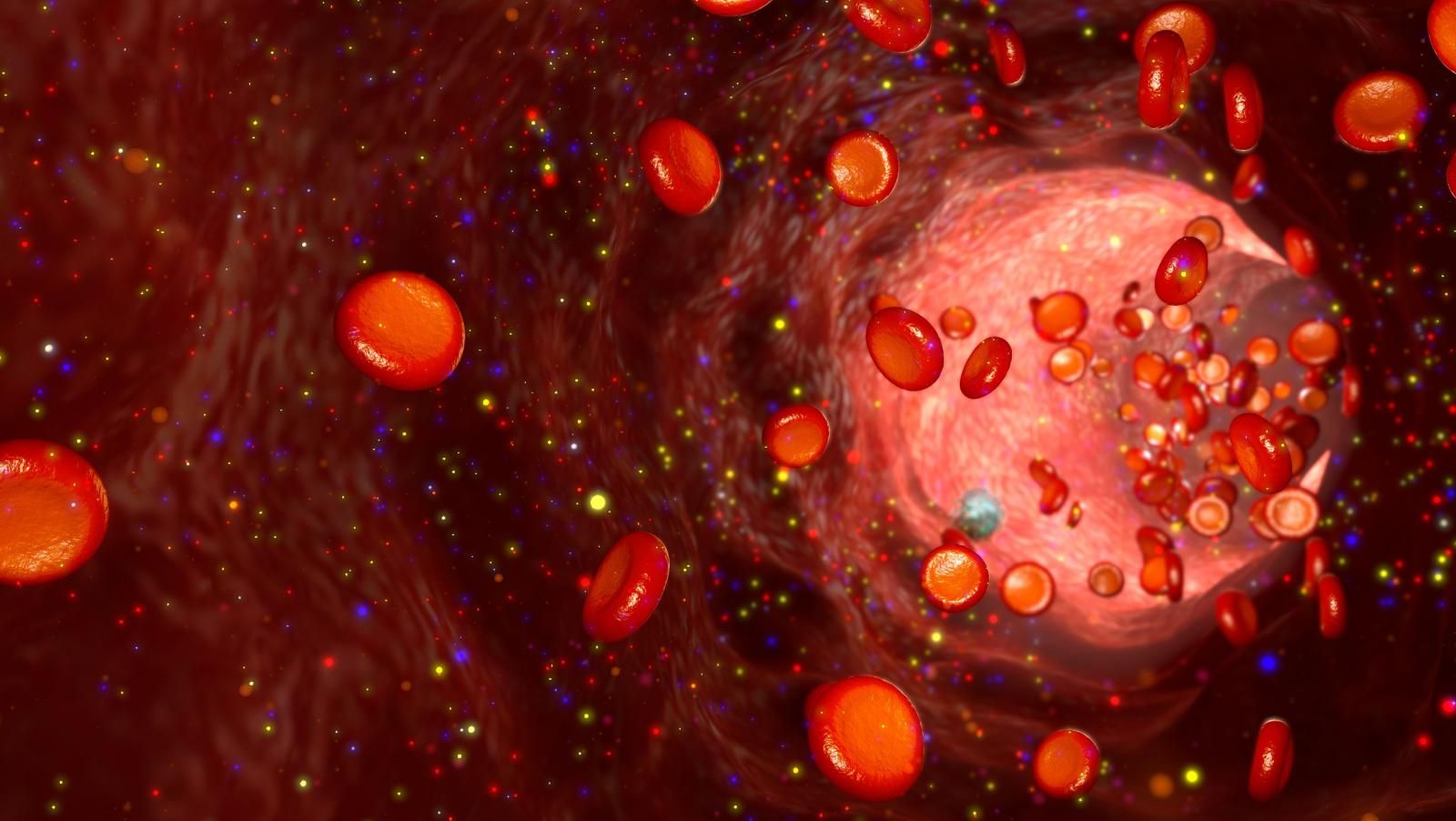Tazemetostat Combined With R-CHOP Appears Tolerable in Newly Diagnosed DLBCL
The addition of tazemetostat to rituximab, cyclophosphamide, doxorubicin, vincristine, prednisone was generally well tolerated and demonstrated early anti-tumor activity in patients with newly diagnosed diffuse large B-cell lymphoma, according to the findings from the phase Ib study.

The addition of tazemetostat to rituximab (Rituxan), cyclophosphamide, doxorubicin, vincristine, prednisone (R-CHOP) was generally well tolerated and demonstrated early anti-tumor activity in patients with newly diagnosed diffuse large B-cell lymphoma (DLBCL), according to the findings from the phase Ib study.
While R-CHOP remains the standard of care in patients with DLBCL, 30% to 40% of patients over the age of 60 years will present with primary refractory disease, representing an unmet need in this patient population. These preliminary findings are encouraging and warrant further evaluation in a phase II setting.
The median follow-up was 20.6 months in cohort 1 (400 mg tazemetostat), 14.5 months in cohort 2 (600 mg tazemetostat), and 7.5 months in cohort 3 (800 mg tazemetostat). One patient died during cycle 1 while 3 patients discontinued treatment (1 due to investigator decision and 2 for reasons other than toxicity or progression) and were considered non-responders. Thirteen patients completed all 8 cycles of therapy and reached metabolic complete response (mCR). The mCR rate was 76.5%.
Two patients relapsed during follow-up; 1 with early relapse was salvaged by R-ICE (rituximab, ifosfamide, carboplatin, etoposide) followed by autologous stem cell transplantation, and 1 late relapse is under salvage treatment with rituximab, dexamethasone, high dose cytarabine, and oxaliplatin. Overall, 11 patients remain in CR with a duration ranging from 2 to 14 months.
Components of R-CHOP, with the exception of vincristine, were administered with a mean dosage close to 100% in patients; 94% received more than 90% of the expected dose of rituximab, while 100% each received more than 90% of the expected dosage of doxorubicin and cyclophosphamide. There was, however, a significant reduction of 50% in the dose of vincristine required in 7 patients (41%), due to peripheral neuropathy and/or constipation.
For the first 2 cycles, cohort 1 had 1 patient with a dose-limiting toxicity (DLT), which was grade 3 constipation. In cohort 3, 1 patient also had a DLT of grade 5 pneumocystis jirovecii during cycle 1. No patients in cohort 2 had DLTs during the first 2 cycles of treatment. Other serious adverse events (SAEs) reported included 1 grade 3 febrile neutropenia and 1 grade 3 hypokalemia.
Out of the 17 patients on the study, >10% experienced non-hematologic AEs. The most common toxicities were gastrointestinal AEs, which included nausea (59%), vomiting (53%), abdominal pain (29%), and diarrhea (23%). Additionally, patients experienced neurological toxicity (35%), infectious (35%), weight loss (29%), musculo-skeletal pain (23%), fatigue (23%), headache (23%), and anxiety, chest pain, cholestasis, hypokalemia, and mucositis (12% each).
Most AEs were grade 1 or 2, while grade 3 toxicities were observed in >10% of patients, which included constipation (24%), nausea (12%), and hypokalemia (12%).
Hematologic AEs, occurring in >10% of patients, included neutropenia (47%), anemia (41%), leukopenia (41%), and thrombocytopenia (12%). Grade 3 or 4 hematologic AEs were observed in 47% of patients, which included neutropenia (47%), leukopenia (29%), anemia (18%), and thrombocytopenia (12%).
Fourteen patients continued treatment after the first 2 cycles. The incidence of hematologic toxicities remained stable during cycles 3 through 8. Anemia (50%), neutropenia (42.9%), and thrombocytopenia (21.4%) were reported. Grade 3 or greater hematologic AEs included leukopenia and neutropenia (28.6%) and thrombocytopenia (21.4%). Investigators noted that incidence of grade 3 thrombocytopenia was higher but did not require platelet transfusion.
Grade 3 or greater non-hematologic AEs occurred in less than 10% of patients, and 1 patient had 2 SAEs, including 1 acute pyelonephritis with staphylococci bacteremia and grade 1 renal failure and a post lumbar puncture syndrome.
In the open-label, multicenter dose escalation study, patients were enrolled in a 3+3 manner to dose levels starting at 400 mg twice daily. Patients received a maximum of 8 cycles of standard R-CHOP every 21 days in combination with tazemetostat at a dose of either 400 mg, 600 mg, or 800 mg twice daily continuously starting on day 2 of cycle 1 until day 21.
Overall, 17 patients received at least 1 dose of the combination, and the median age was 68 years old (range, 61-76). Thirteen patients (76.5%) had stage IV disease, while 9 (53%) had 2 or more extra-nodal involvement. Of the 15 patients who had available data for RT-MLPA analysis, 8 were classified as GC-DLBCL NOS, 5 as ABC-DLBCL NOS, and 1 each of unclassified DLBCL NOS and EBV+ DLBCL.
To be included in the trial, treatment-naïve patients with high risk DLBCL had to be between the ages of 60 and 80 years old. They had to have an ECOG performance status of 0 or 1, adequate renal function, bone marrow function, liver function, left ventricular ejection fraction in >50%.
If patients presented with central nervous system or meningeal involvement, they were excluded from the study. Additionally, patients were excluded if they had received prior treatment with any EZH2 inhibitor or had any previous lymphoma treatment.
While these preliminary findings are encouraging for a patient population of unmet need, further investigation of the combination will be explored in a phase II clinical trial.
Reference:
Sarkozy C, Morschhauser F, Dubois S, et al. A LYSA Phase Ib Study of tazemetostat (EPZ-6438) plus R-CHOP in newly diagnosed Diffuse Large B Cell Lymphoma (DLBCL) patients with poor prognosis features [Published Online March 2, 2020].Clin Cancer Res. doi: 10.1158/1078-0432.CCR-19-3741.
Examining the Non-Hodgkin Lymphoma Treatment Paradigm
July 15th 2022In season 3, episode 6 of Targeted Talks, Yazan Samhouri, MD, discusses the exciting new agents for the treatment of non-Hodgkin lymphoma, the clinical trials that support their use, and hopes for the future of treatment.
Listen